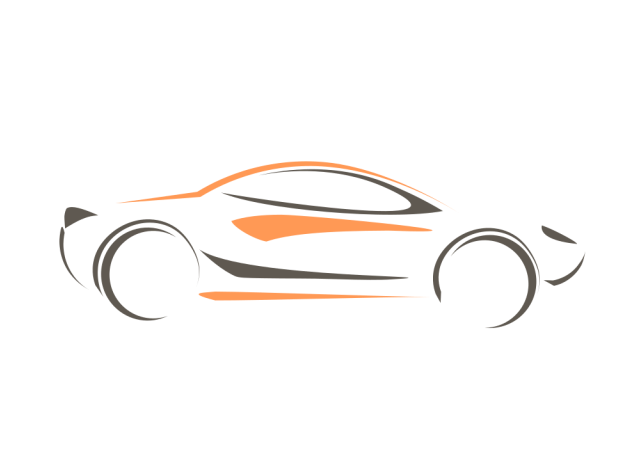Chinese production
In 1998, four years after production of the Maestro ended in the UK, the Chinese tobacco company Etsong acquired the tooling and intellectual property rights to the car. In 2000, the company placed it back into production in two variants; the Etsong Lubao QE6400 Ruby and Etsong Lubao QE6440 Laird, built in a brand-new, specially constructed factory in Qingdao, China. The QE6400 used the hatchback bodyshell of the Maestro, but the frontal styling of the Montego, while the QE6440 was a panel van variant. Both cars used Toyota engines and transmissions.
In 2003, Etsong exited the car-making business and sold the Lubao factory to First Automobile Works, one of China’s biggest car-makers. FAW discontinued the QE6440 van, but as of 2007 continues to market the hatchback as the FAW Lubao CA6410.
MG versions
MG Maestro
MG Maestro 1600 (1983–1984)
Rushed into production against engineers’ advice at the launch in early 1983, the original MG Maestro was under-developed. Its 1.6 litre R-Series engine ran roughly, was difficult to start when warm, and its Weber twin carburettors could not be tuned by dealership workshops, who were used to SU carburettors. The R-Series model was replaced in July 1984 with the short-lived S-Series model which was built until October 1984 when the EFi was launched. Despite the reliability issues, more than 15,000 MG Maestro 1600s were built.
MG Maestro 2.0 EFi (1984–1991)
After a brief interval, the MG Maestro was relaunched with a fuel injected 2.0 litre engine that gave considerably better performance than its predecessor. Handling and performance were good, and gave Austin Rover its first serious rival for the Golf GTI and Escort XR3i.
This model was trialled as an emergency response/area car by the Metropolitan Police in the early 1990s. However, the Ford Sierra 2.0 litre was eventually chosen as the mainstay of the fleet for reasons of durability and economy.[]
MG Maestro Turbo (1989–1991)
With the Rover Group only a few months away, the limited edition (500 + 5 press cars) MG Maestro Turbo (launched in early 1989) was the final car from ARG. It made use of the 2.0’s already impressive engine, but the combination of carburettor and turbocharger gave it a top speed of almost 130 mph (210 km/h) and an 0–60 mph time of 6.7 seconds. It was faster than the majority of its competitors, but the high performance, Tickford designed bodykit and alloys did little to disguise the fact that it was very much still a Maestro. Sales were slow, as it appeared six years after the Maestro’s launch.
Production of the MG Maestro finished in 1991, as Rover was concentrating on the new 200 and 400 models, though the standard Maestro remained in production until December 1994.
Прибытие Мастера Остина
Хороший коммерческий прием Austin Metro и Rover SD1 на английской земле и уровень продаж на европейской земле побудили английского производителя разработать компактный автомобиль, который заполнил бы коммерческий пробел между ними. Родился Austin Maestro, автомобиль, внезапно заменивший старые модели Austin Allegro, Austin Maxi и MG 1300..
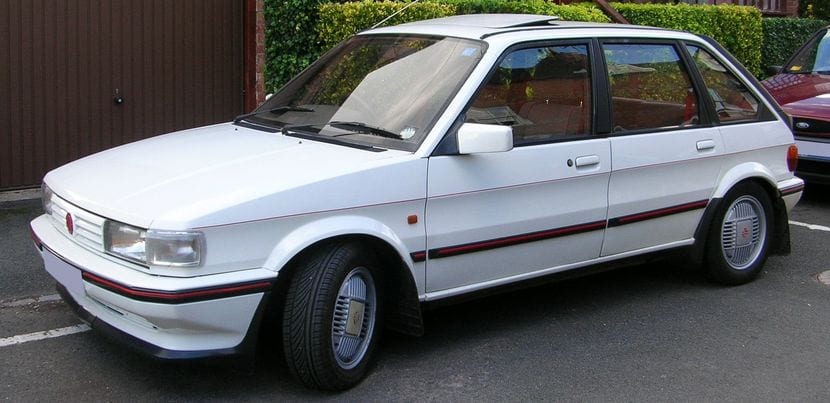
Выпущенный на рынок в 1983 году и произведенный на заводе Морриса в Коули (Оксфордшир), Austin Maestro был представлен как компактный, высотой чуть более четырех метров, с внутренним пространством, которое даже превышает пространство многих седанов среднего размера. и с оборудованием, которое в более высоких версиях можно было бы классифицировать как роскошь, как по богатству его оснащения, так и по качеству материалов, используемых внутри.
Первоначальное механическое предложение было сформулировано из двух известные тетрацилиндрические блоки. Версии Base и L оснащались двигателем объемом 1.275 кубических сантиметров и мощностью 68 лошадиных сил, уже известным по модели Austin Mini. С этим блоком, но с «всего 64 лошадками» предлагалась наиболее оснащенная версия HLE с гораздо более тщательным интерьером по сравнению с предыдущими версиями.
Второй доступный блок объемом 1.598 кубических сантиметров и мощностью 81 л.с. уже был известен по предыдущим моделям Austin и был зарезервирован для отделки HLS, очень похожей по характеристикам на HLE. На этом блоке, но с увеличенной до 103 лошадиных сил мощностью, Мастер МГ, который был в основном таким же автомобилем, как Austin Maestro, с эстетически элегантным спортивным видом, хотя стандартное оборудование было похоже на оборудование HLE и HLS.
В качестве курьеза развития Austin Maestro, который подчеркивает амбиции производителя, вам может быть интересно узнать, что первые прототипы начали катиться с подвеской Hydrogas от Austin Metro, но на последних этапах подвеска Volkswagen Гольф устанавливался на прототипы. Я сказал то же самое и не похоже, потому что английский производитель закупил партию Volkswagen Golf и он демонтировал их подвеску, чтобы установить ее на прототипы Maestro, намного больше и тяжелее, чем Golf, и, прежде всего, с колесной базой, намного превосходящей колесную базу немецкой модели.
продажи начинаются
Остин Мастер Его начали производить в ноябре 1982 года, хотя продажи начались только 1983 марта XNUMX года.. Такой прогноз был связан с тем, что производитель ожидал очень хорошего коммерческого приема и хотел быть готовым удовлетворить спрос.
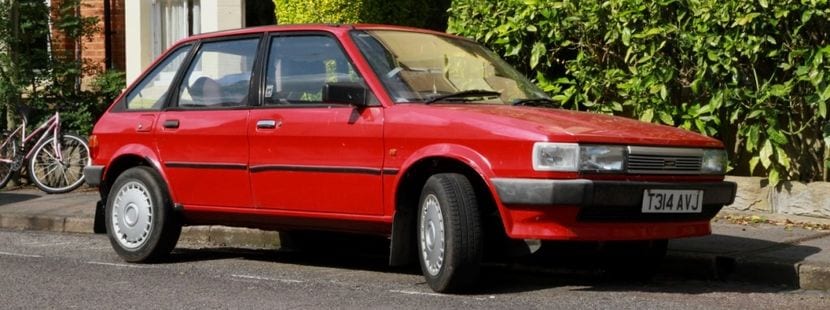
Когда Austin Maestro прошел через руки прессы, он получил очень хорошие отзывы за включение, впервые в своей категории, таких элементов, как многослойное ветровое стекло, окрашенные пластиковые бамперы, регулируемые по высоте ремни безопасности или система управления. Еще одной высоко оцененной деталью был большой интервал технического обслуживания: Austin Maestro нужно было обслуживать каждые 12.000 19.000 миль (XNUMX XNUMX километров), что снизил стоимость обслуживания почти вдвое по сравнению с конкурентами. Кроме того, модели MG имели синтезатор речи и цифровые приборы, хотя и с аналоговым одометром.
Почти вся пресса дала понять, что Austin Maestro был просторным, удобным и очень легким в управлении автомобилем, и его стали рассматривать как автомобиль полностью подготовлен для конкуренции на европейском рынке.
коммерческая эволюция
В следующем году он запустил Austin Montego как четырехдверная версия, производная от Maestro. но с дифференцированной эстетикой. Этот седан внезапно заменил все средние седаны группы, а также сгладил падение продаж, от которого пострадал Rover SD1 уже в конце своей коммерческой жизни, и робкий прием, который получил Triumph Acclaim, клон Honda. Balade, имел на европейском рынке.

Обе модели, Maestro и Montego, испытали настоящий бум продаж в первые годы коммерциализации, в дополнение к постоянному совершенствованию модельного ряда, как с точки зрения механики, так и с точки зрения оборудования.
Тяжелое прошлое Остина Маэстро
Я возвращаюсь к началу años 50 когда British Austin Motor Company и Morris Motor Company объединились под названием British Motor Corporation (BMC). Эта группа также была известна как Остин-Моррис, хотя они никогда не использовали это имя на деловом или коммерческом уровне. В договоре о слиянии оговаривалось сохранение обоих брендов, но быстро выяснилось, что превосходство Austin Motor Company над Morris Motor Company. На самом деле, несмотря на предполагаемую коммерческую независимость, обе марки начали продавать «подозрительно» похожие автомобили. В любом случае, оба производителя получили заметный прием на английском рынке, а их продукция по техническому уровню была на уровне, аналогичном уровню остальных европейских конкурентов.
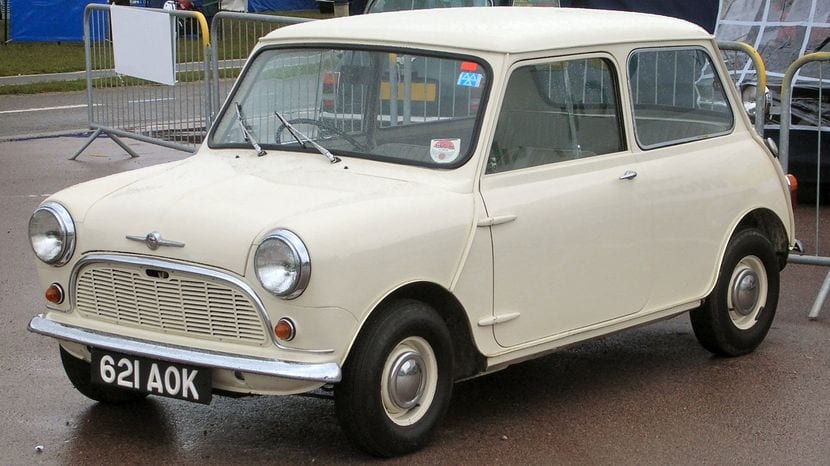
В 1957 году начались продажи модели A55 Farina, которая предлагалась с небольшими модификациями под марками Austin, MG, Morris, Riley и Siam di Tella и подвергалась резкой критике за чрезмерное сходство с роскошной Lancia Flaminia. К счастью для BMC и всего мира, в 1959 году они вывели на рынок подлинные и оригинальные Мини, продается как Остин или как Моррис. Этот внедорожник пополнил казну BMC благодаря его большому приему в Англии и лицензионным контрактам на производство, которые позволили производить этот великолепный внедорожник в таких разных странах, как Испания, Италия, Чили или Австралия.
Маленькая машина рождается
На этом этапе я должен прояснить три аспекта, которые способствовали коммерческому успеху как Mini, так и его конкурента, Fiat Nuova 500, и которые, нисколько не недооценивая этих двух городских гениев, помогают немного лучше понять их быстрое распространение:
- La суэцкий кризис 1956 год и нехватка нефти заставили всю Европу заинтересоваться экономичными автомобилями.
- Появление небольших и дешевых автомобилей означало, что новый и относительно состоятельный европейский средний класс мог себе это позволить. согласен купить машину и даже от второго транспортного средства в вашей семье.
- La массовое использование женщин на дороге и подход, который многие бренды дали этому явлению с рекламой, которая сегодня была бы предосудительно сексистской и даже запрещенной.
Reception
Austin Maestros in storage
The Maestro was launched in March 1983. In its summing up of the new car the Consumers’ Association, in the June edition of its Which? journal, described it as roomy, comfortable, and nice to drive, and said «If you are considering buying one now, our advice, based on our first impressions, is to go ahead». In January 1984, after testing the car, they concluded: «In comparison with opposition of a similar price and body size, the Maestro has a clear advantage on room for passengers, with few cars equalling it for comfort either in the front or back». They also considered it to be a serious rival to the higher-segment Vauxhall Cavalier and Ford Sierra, apart from its smaller boot space.
Engine and transmission
At launch the Maestro got a choice of 1275cc A-plus or 1598cc R-Series engines, the former being well known from other Austin applications. It’ll soldier on for many miles but you’ll need to check for oil leaks, noisy valve-gear and the usual signs of excessive exhaust smoke; it’s straightforward to rebuild, though. The larger unit was replaced by the S-Series in 1984 which has a cam belt that needs replacing every 48k miles/four years.
A further addition in late 1984 was the 2.0-litre O-Series engine for the MG models, and that’s not without its own issues, including head gasket oil leaks that can prove hard to cure. A failed crankshaft oil seal requires engine removal to sort, while a special tool is needed to adjust the valve clearances so listen out for an especially clattery unit as the job may have been ignored. And all engines need checking for a healthy cooling system as overheating will quickly do for the head gasket.
However, one of the most important check with any of the petrol engines is how well it runs and idles; electronically-controlled carburettors were a good idea in theory but caused all sorts of bothers in practice. Lucas injection was employed on EFi models and there’s the potential for failed sensors and ECUs, so be wary of a car that runs poorly. Better news is that service items and consumables for most engines should be easy to source. Lastly, there’s the Perkins/Prima diesel that proves long-lasting if somewhat unrefined, and just needs a check for excessive smoke that points to fuel system issues.
Depending on the engine you’ll find either a VW gearbox or Honda’s PG1 unit, and either could be suffering from worn synchro or bearings by now. A notably vague gear-shift is likely due to a worn linkage but it’s easy enough to fix. Watch for signs of a worn or juddering clutch, too. There was also the option of VW or ZF automatic transmissions, both of which need the usual checks for jerky shifts or blackened fluid.
Running gear
There was nothing unexpected in the suspension department, with both models employing MacPherson struts up front and trailing arms at the back. Checks should focus on the usual signs of wear and tear, from leaking dampers and corroded or cracked coil springs to perished bushes.
A road test should reveal the knocks and rattles that indicate an overhaul is due, and it’s all easy enough to carry out on a DIY basis. More important is examining the mounting points for corrosion, especially the rear damper top mounts where you’ll need to lift the carpets for a proper look. If it’s bad here you’re looking at a major repair.
The brakes were thoroughly conventional, too, so the usual scrutiny for wear and tear will suffice. Little used examples could be suffering from corroded or seized parts, but there’s nothing to worry the competent home mechanic should an overhaul be on the cards. A trickier job to tackle is replacing the front wheel bearings – it’s not really DIY-friendly so listen out for the tell-tale drone of worn items.
There’s little of concern with the steering, other than the need to watch for the usual wear in rack and joints. Power-assistance is definitely preferable, though, and you’ll just want to ensure that the pump isn’t on its last legs as you can’t buy replacements. One final thing is that some models were fitted with metric alloy wheels, making tyre replacement trickier and more expensive. However, the wheels may have been swapped for alternatives by now.

Bodywork
This period wasn’t a high point for BL/Austin Rover quality and the result was that both models were prone to galloping corrosion. Today, you’ll need to check every single inch of bodywork with a particular focus on areas such as door bottoms, rear wheel arches, sills and seams, and valances. The bottom edge of the Maestro’s tailgate and the leading edge of the Montego’s bonnet are other trouble-spots, and examine the joint within the rear door aperture where the sill and rear wing meet.
Rust also breaks out around the fuel filler, and it could be pretty bad by the time it becomes visible. It’s also advisable to scrutinise the windscreen surround; having the screen bonded in place was a novelty, but not only was it prone to leaks, clumsy replacement can lead to corrosion and it’s not an easy repair. Blocked sunroof drains also promote rust around the opening, and water in a Montego’s boot can be caused by detached drain pipes located behind the side trim panels.
It’s also a wise move to take a good look underneath, checking the integrity of the cabin and boot floors. And we’re not done yet, as peeling lacquer and grotty paintwork aren’t uncommon. Light units need checking for damage as you might struggle to find replacements, and the same also applies to the bumpers. These were something of an innovation at the time, but as they became more brittle with age they were easily damaged.
Overall, sourcing replacement panels and the like is very difficult, which means hunting for second-hand parts (which may be no better) or repair/ fabrication. The owners’ club has been exploring the possibility of remaking some panels so it’s certainly worth approaching them in the first instance.
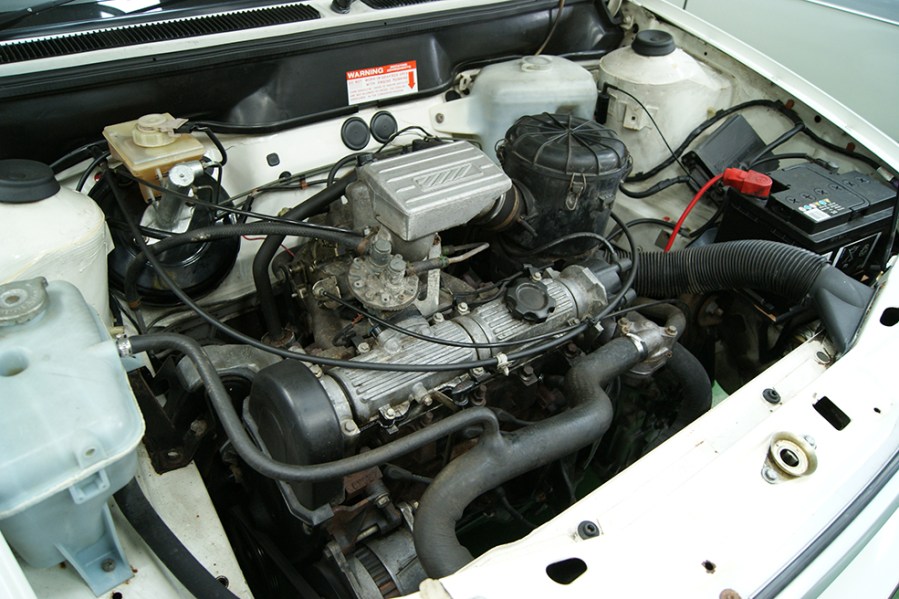
Что случилось с Остин Маэстро?
Austin Maestro вовсе не был плохим продуктом. Несмотря на проблемы с регулировкой и надежностью первых агрегатов, нельзя объективно утверждать, что это была машина хуже своих континентальных конкурентов. Тем не менее, история производителя дает понять, что он пришел из менталитета выживания бизнеса которому государство «протягивало руку» всякий раз, когда это было необходимо, просто из гордости за сохранение брендов, которые считались двигателем английской автомобильной промышленности.
С другой стороны, как только они открылись для большинства европейских рынков в 70-х и 80-х годах, они сделали это с интересным набором продуктов, но после запуска они не умели эволюционировать с той же скоростью, что и остальные европейские машины. Когда, в конце концов, им удалось запустить продукт, способный конкурировать и развиваться с той же скоростью, что и французские или немецкие бренды, такие как Austin Maestro, именно они запутались на рынке с запуском продуктов, которые поглощают каждый др., как это произошло с Rover SD3.

Наконец, есть две детали, которые отличали Austin Maestro с момента его запуска. С одной стороны, нежелание европейского рынка британских автомобилей, которые всегда выделялись своей использование высококачественных материалов в его интерьерах, хотя и посредственная сборка, а с другой стороны, тот факт, что на большей части европейских рынков Остин Маэстро продается только с более мощные и дорогие двигатели, из-за чего начальная цена была намного выше, чем у конкурентов, которых они превзошли, да, с точки зрения оборудования и соответствующих отделов обслуживания клиентов.
История Austin Maestro — это не история плохой машины, а история недальновидного производителя, который не сразу осознал, насколько важно не отставать от конкурентов. По логике вещей, когда он захотел это осознать, было уже слишком поздно
Interior, trim and electrics
Neither build nor material quality were strong points, so it’s going to be a case of avoiding anything with notably shabby seats and carpets. In fact, we wouldn’t be too fussy about spec and instead concentrate on finding the best example you can. Difficulty in sourcing replacement trim means you may have to settle for seats and carpets that aren’t the original colour, and while the wood-and-leather cabin of a Vanden Plas is lovely, refurbishment will be more costly. A sagging headlining is a common bugbear, too, and watch for trim that’s been damaged by water leaks from window seals and sunroof. Plastic trim was easily damaged, so look for cracks in the dashboard moulding.
In February 1986, the Maestro’s original multi-piece dash was replaced with the more conventional unit from the Montego and voice synthesis unit dropped. The common distortion of these dashes above the instruments which is something you’ll just have to live with.
As for the electrics, they were straightforward by modern standards and it’s simply going to be a case of ensuring that everything works. Loose and corroded connectors can be responsible for many faults, so patient diagnosis and repairs may be needed, but pay particular attention to the likes of an electric sunroof, central locking and electric windows. The latter suffer from failure of the control unit, although replacement is straightforward if you can find one.
Steering column stalks can also fail, so be sure that lights and wipers work as they should. It’s also worth making sure the heater works on all of its settings as sorting a failed unit will involve removal of the dashboard.

Эволюция
Маэстро в версии MG
В году Maestro MG отказался от 1,6-литрового двигателя R-серии в пользу 4-цилиндрового двигателя S-серии объемом 1994 см³ без наддува с впрыском мощностью 115 л.с. ( Maestro MG EFI ) или с турбонаддувом с карбюратором мощностью 150 л.с. ( Maestro MG Turbo ) . .
С 1987 года продажи Maestro продолжались под брендом Rover; по этому поводу автомобиль подвергся рестайлингу , который в основном коснулся некоторых элементов кузова (бамперы, решетка радиатора, пластиковые профили ) и интерьера (с использованием приборной панели и сидений от Montego ).
С технической точки зрения наиболее важным нововведением стало введение версии 1300 -й серии А, оснащенной экономичной топливной системой (с карбюратором , переработанным электронным управлением и уменьшенной степенью сжатия ). Этот вариант 4-цилиндрового двигателя объемом 1275 см³, способного развивать мощность 64 л.с., был зарезервирован для особо экономичной версии под названием City . Остальная часть модельного ряда образовалась за счет комбинации предыдущих двигателей с новыми версиями, получившими названия L , LX и SLX . В году также поступил 4-цилиндровый дизель с непосредственным впрыском объемом 1991 см³ , как в атмосферном (62 л.с.), так и в турбированном (81 л.с.) вариантах производства английской Perkins Engines .
Однако притча Маэстро находилась в нисходящей фазе, учитывая, что в той же категории Rover уже имел в каталоге серию Rover 400 , а с 1992 года ассортимент был сокращен только до дизельных версий. Производство окончательно прекратилось в году, когда группа решила сосредоточиться на бренде Rover.
В этот момент была предпринята попытка договориться о производстве автомобиля в Болгарии на CKD благодаря созданию Rodacar , совместного предприятия между Rover Group и болгарской государственной компанией. Соглашение было недолгим и закончилось через несколько месяцев после отправки на сборку около 2000 автомобилей .
Позже некоторые части проекта Maestro/Montego были воскрешены для производства некоторых новых автомобилей в Китае .
Decline and «rebirth»
Production of the Maestro, which was already suffering from a decline in sales, was pruned back by autumn 1989 on the launch of the second generation Rover 200, which was aimed at the higher end of the small family car market, with the Maestro being kept on sale as a cheaper alternative with more basic versions available.
The arrival of the Rover 600 in 1993 saw the closure of the Maestro/Montego assembly line, but small-scale production in complete knock down (CKD) kit form continued until 1994, when BMW’s takeover of Rover saw the plug finally being pulled on production almost immediately.
Reputation
The Maestro sold over 600,000 units thanks to a spacious, practical interior, competitive asking prices, low running costs and good ride and handling, although it failed to match the success of the Ford Escort and Vauxhall Astra. The fact that the company’s similarly sized (but upmarket) Honda-based Rover 200 range was one of Britain’s strongest sellers during this period serves to highlight the confused development and branding strategies which arguably led to the demise of the company.
A survey by Auto Express magazine, conducted in August 2006, revealed that the Maestro was Britain’s ninth most scrapped car of the previous 30 years, with just 11,574 examples still in circulation and in working order in the United Kingdom.
The rear lighting units of the van version lived on until 1998 in the Series I Land Rover Discovery.
Popularity
Despite only going on sale in early March 1983, the Maestro was Britain’s sixth best selling car in 1983 with more than 65,000 sales. Its first full year on sale, 1984, brought more than 83,000 sales — which would be the Maestro’s best year for sales in any country. As had happened the previous year, it was Britain’s best selling car in 1984. However, it had fallen to 10th in 1985; although Austin Rover managed to keep up a strong presence in this sector due to the arrival of the similar sized Rover 200 saloon in August 1984. By 1988, it was merely the 14th best selling car in Britain, dipping further to 19th place in 1989, the year that the second generation Rover 200 was launched. The Maestro was now not only behind the all conquering Ford Escort and Vauxhall Astra (which first outsold it in 1985) in the sales charts, but also behind some foreign competitors including the Volkswagen Golf and Peugeot 309. Sales fell lower still afterwards, as the latest Rover 200 was firmly established as the Rover Group’s best seller in this sector, and the Maestro remained on sale as a cheaper alternative until the last ones left the showrooms in the mid 1990s.
Austin Maestro (1983 – 1994) At A Glance
Spacious and economical
Rusty and generally undesirable, only the tidiest examples are worth having
Following hard on the heels of the Metro, the Maestrowas supposed to return BL to profitability in the 1980s. In reality, it hit the market five years too late, and lacked the showroom appeal of the sharp-suited Ford Escort Mk3 and Vauxhall Astra.
The Maestro racked up even poorer sales figures than the Allegro despite being considerably more capable. Engines and (VW-sourced) gearboxes were a disappointment, and non-structual rust continues to be a real problem.
Talking-dash Vanden Plas is interesting, as is the ultra-economical HLE version – and probably the ones to have in coming years..
More on the Maestro and Montego at AROnline
External links
| Type | 1980s | 1990s | 2000s | 2010s | |||||||||||||||||||||||
| 1 | 2 | 3 | 4 | 5 | 6 | 7 | 8 | 9 | 1 | 2 | 3 | 4 | 5 | 6 | 7 | 8 | 9 | 1 | 2 | 3 | 4 | 5 | 6 | 7 | 8 | 9 | 1 |
| Ownership | BL plc / Rover Group | British Aerospace | BMW | Phoenix Venture Holdings | Nanjing Auto / SAIC | ||||||||||||||||||||||
| Group name | BL Cars | Austin Rover Group / Land Rover Group | Rover Group | MG Rover | NAC MG / MG Motor | ||||||||||||||||||||||
| City car | Mini | ||||||||||||||||||||||||||
| Supermini | Austin Metro | Rover Metro | Rover 100 | CityRover | MG 3 | ||||||||||||||||||||||
| Small family car | Austin Allegro | Austin Maestro | MG ZR | MG 3SW | |||||||||||||||||||||||
| Triumph Acclaim | Rover 200 (SD3) | Rover 200 (R8) | Rover 200 (R3) | Rover 25 | |||||||||||||||||||||||
| Large family car | Morris Ital | Austin Montego | MG ZS | ||||||||||||||||||||||||
| Rover 400 (R8) | Rover 400 (HH-R) | Rover 45 | MG 6 | ||||||||||||||||||||||||
| Princess | Austin Ambassador | Rover 600 | MG ZT | ||||||||||||||||||||||||
| Rover 75 | MG 7 | ||||||||||||||||||||||||||
| Executive car | Rover SD1 | Rover 800 (XX) | Rover 800 (R17) | ||||||||||||||||||||||||
| Coupé | Rover 200 Coupé | ||||||||||||||||||||||||||
| Sports car | Triumph TR7 | MG RV8 | MG F | MG TF | MG TF | ||||||||||||||||||||||
| MG SV | |||||||||||||||||||||||||||
| Off-road and SUV | Land Rover SIII | Land Rover 90/110 | Land Rover Defender | (Land Rover acquired by Ford in 2000) | |||||||||||||||||||||||
| Range Rover | |||||||||||||||||||||||||||
| Land Rover Discovery | |||||||||||||||||||||||||||
| Land Rover Freelander |
Models
A campervan conversion. This variant has flush front headlights. Many commercial (van) versions of the Maestro, which shared this campervan’s basic bodyshell, had smaller, recessed headlights.
Campervan conversion showing the rear lights as also used by the Land Rover Discovery
Engines
- 1983–1993–1275 cc A-Series I4, 68 hp (51 kW) at 5800 rpm and 75 ft·lbf (102 Nm) at 3500 rpm
- 1983–1985–1275 cc A-Series I4, 64 hp (48 kW) at 5500 rpm and 73 ft·lbf (99 Nm) at 3500 rpm HLE
- 1983 – July 1984–1598 cc R-Series I4, 81 hp (60 kW) at 5500 rpm and 91 lb·ft (123 N·m) at 3500 rpm
- 1983 – July 1984–1598 cc R-Series I4, 103 hp (77 kW) at 6000 rpm and 100 lb·ft (140 N·m) at 4000 rpm MG
- 1984–1993–1598 cc S-Series I4, 85 hp (63 kW) at 5600 rpm and 97 lb·ft (132 N·m) at 3500 rpm
- July 1984 – October 1984–1598 cc S-Series I4, 103 hp (77 kW) at 6000 rpm MG
- 1984–1992–1994 cc O-Series I4, 115 hp (86 kW) MG EFi and 2.0i
- 1988–1990–1994 cc O-Series I4, 152 hp (113 kW) MG Turbo
- 1990–1992–1994 cc Austin/Rover MDi – Perkins Prima NA I4, 62 hp (46 kW)
- 1992–1994–1994 cc Austin/Rover MDi – Perkins Prima TD I4, 81 hp (60 kW) at 4500 rpm and 116 lb·ft (157 N·m) at 2500 rpm
Some prototype versions have a 1.8-litre petrol or Volkswagen’s 1.9 diesel engine; these were never used.
Английский пациент
Несмотря на выпуск интересных с точки зрения качества и рыночного позиционирования автомобилей, таких как MG F или Rover 75, счета по-прежнему не были сбалансированы и английская группа стала известна среди профессионалов отрасли как английский пациент. В 2000 году BMW продала Land Rover американскому Ford, но только в 2005 году немецкая компания сделала странный деловой ход, который удивил мир и положил конец брендам Austin и Rover навсегда и временно отменил разработки MG.
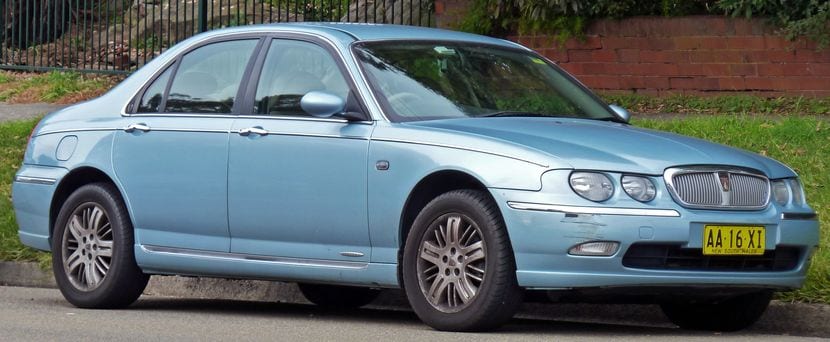
Бренд MG был продан китайской автомобильной корпорации Naijing, права на производство Rover 25 и Rover 45 были куплены также китайской Shanghai Automotive Industry Corporation (SAIC), но бренд Rover, понимаемый как право на эксплуатацию, принадлежит India Tata. Моторс Лимитед. На самом деле, старые Rover 75, которые сейчас производятся SAIC, продаются под именем Roewe 750. А Mini? Ну, BMW сохранил его.
При таком сценарии, при котором было неизвестно, кому принадлежат марки и кому принадлежали права, компания FAW решила прекратить производство английской модели, тем самым положив конец истории марок Austin Maestro и марок Austin и Rover.
Слияния и политика
В 1965 году группа приобрела компанию Pressed Steel, которая производила кузова для BMC и Jaguar Cars Limited, а теперь принадлежит BMW и отвечает за производство кузовов для Mini.
С приходом к власти Лейбористской партии и в ответ на покупку Chrysler Europe группы Rootes, британское правительство «пригласило» (с большим количеством цитат) английских производителей к слиянию. Вот как в 1966 году BMC купила также British Jaguar Cars Limited и два ее бренда, Jaguar и Daimler, и снова изменила свое название, переименовав себя в British Motor Holdings Limited (BMH).

Так много слияния повлекло за собой некоторые расходы, которые продажи Mini не могли взять на себя, и в 1968 вся группа объявила о банкротстве хотя ему еще раз удалось добиться от английского правительства «разрешения» его слияние с другим английским производителем, на этот раз с Leyland Motor Corporation Limited (LMC), небольшим, но прибыльным производителем, которому принадлежат бренды Land Rover, Leyland, Rover и Triumph. Слияние этих двух групп привело к созданию British Leyland Motor Corporation Limited (BLMC).
Хотя бренды Jaguar, Daimler и те, что ранее находились под эгидой LMC, были относительно прибыльными брендами, счета по-прежнему не оплачивались, на коммерческом уровне не было серьезных изменений, а его очередное банкротство привело к национализация группы в 1975 г. и к новому изменению названия: British Leyland Limited.
С этой национализацией стало очевидным коммерческое значение, которое было придано продуктам бывшей LMC за счет сохранения имени Leyland в названии компании. Кроме того, можно также сказать, что при этой операции британское правительство стало владельцем большинства английских производителей автомобилей массового производства. (то есть не кустарной), учитывая, что в 1973 году она также национализировала Rolls Royce и Bentley, чтобы спасти их от очередного банкротства.
Я только что подвел итоги 50-х, 60-х и 70-х годов британского автомобилестроения и говорил только о банкротства, банкротства и слияния с более политическими, чем деловыми интересами. Жаль, потому что политическое упрямство вынуждало поддерживать производство продуктов, которые не были очень (или вообще не были) прибыльными, что ограничивало возможности брендов развивать или улучшать продукты, имевшие хороший коммерческий прием или самые лучшие. адаптация своей продукции против конкуренции со стороны континентальной Европы.
Ультиматум British Leyland Limited
años 70 Они начались с успехов Mini и BMC ADO16 (Austin 1100/1300), с хорошего приема Jaguar XJ и с экономического спада, вызванного провалом Austin 3-Litre, роскошной и дорогой версии Остин 1800. что британское правительство поставило бизнес-группе ультиматум: выжить или умереть.
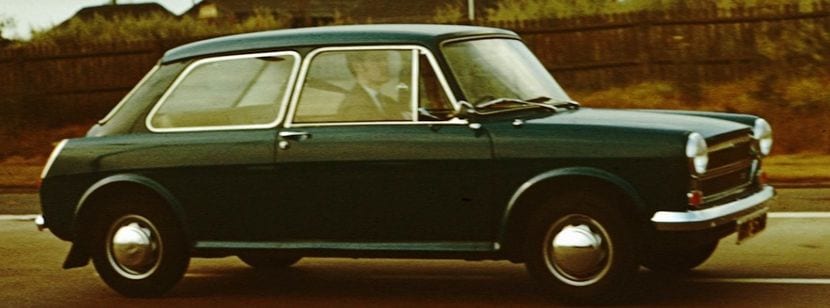
Потребность в выпуске прибыльных продуктов привела к разработке Rover SD1, последнего настоящего английского вездехода, и Austin Metro. Эти два автомобиля заменили не какой-то конкретный автомобиль, а целые семейства. Так что пока Austin Metro коммерчески позиционировался в конце предложения как предполагаемая замена Mini. и английский представитель на рынке городских транспортных средств, Rover SD1 росчерком пера заменил все большие седаны английского производителя и стал высшим представителем роскоши и спортивного мастерства в группе, сразу после Jaguar и Daimler.
Что касается Rover SD1, я должен сказать, что это был автомобиль, который имел хорошие коммерческие отзывы, несмотря на резкую критику за его пятидверный кузов и отсутствие классической решетки радиатора. На самом деле, он был известен как наименьший ровер в истории, естественно эта критика прозвучала до запуска роверов 200, 400 и 800…
Design and development
The new cars for the lower and upper medium segments were to share a platform, with various trim and styling differences to distinguish the two different models. This would give the cost benefits of production automation and flexibility. This common platform was given the project name LC10, using the Leyland Cars project sequence (LC8 became the Austin Mini Metro, LC9 became the Triumph Acclaim). Preliminary design work for LC10 began in 1977.
LC10 was styled by Ian Beech under the direction of BL designer David Bache. Two main body variations were provided: a five-door hatchback and a four-door notchback. It was a departure from previous front-wheel drive cars from the company in that it dispensed with the famous Issigonis transmission-in-sump powertrain that had been pioneered in the Mini. Coupled to the A-Series and R-Series powerplants was an end-on transmission (as pioneered by FIAT with the Autobianchi Primula), purchased from Volkswagen. The sophisticated Hydragas suspension system used on previous BL models was sacrificed on cost grounds, with a conventional MacPherson strut system at the front and a Volkswagen Golf style torsion beam at the rear being used instead, despite the compromise in terms of lost load space. Prototypes were even tested with actual Golf suspension components. This may have led to the Achilles heel of the early cars, which were prone to front-wheel bearing wear/failure. The Maestro was larger and heavier than the first VW Golf.
It was decided that the five-door hatchback version would be engineered first. It was given its own project designation, LM10, with this version to be launched as the Austin Maestro. The booted notchback version was to follow and it was designated as LM11, although its development was to diverge from the original path, it was later launched as the Austin Montego.
